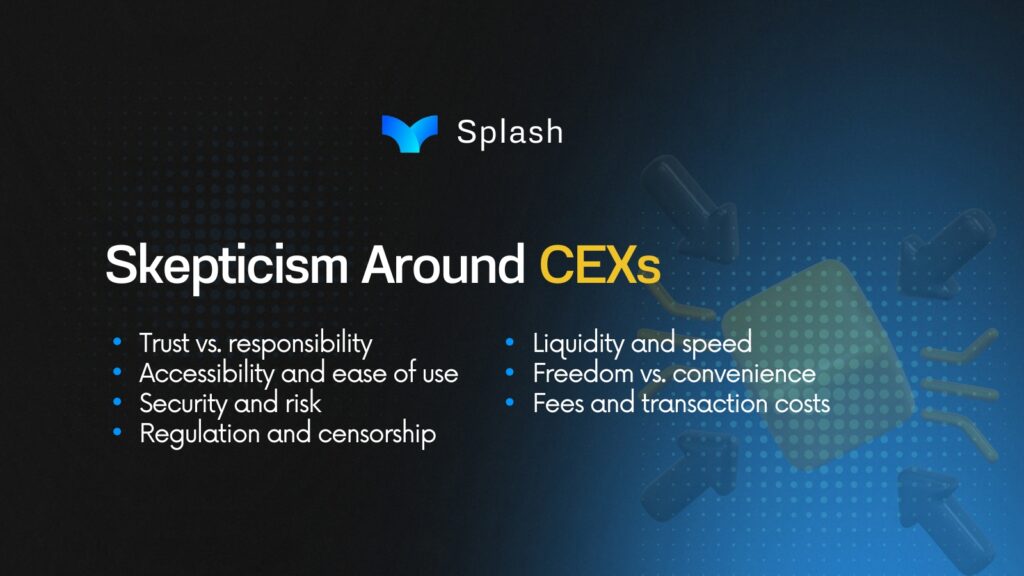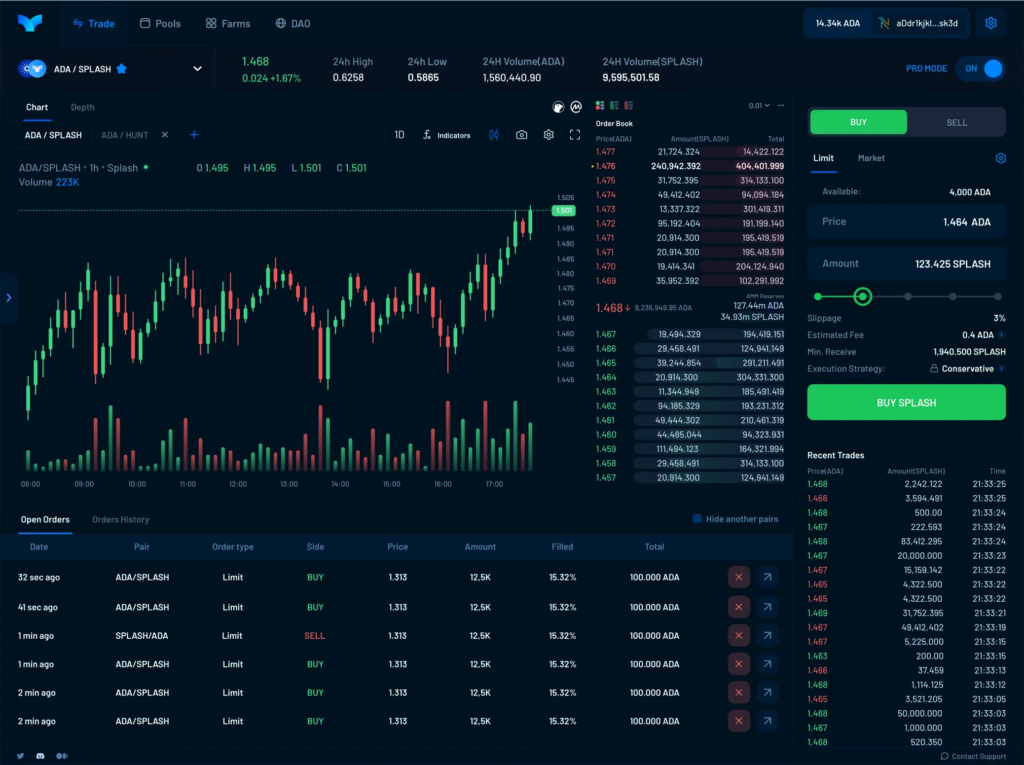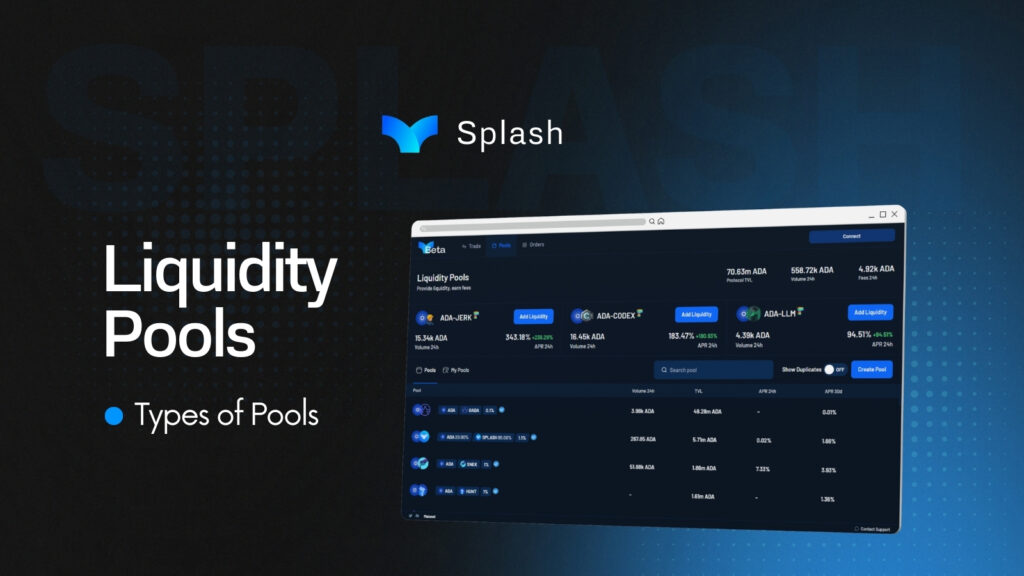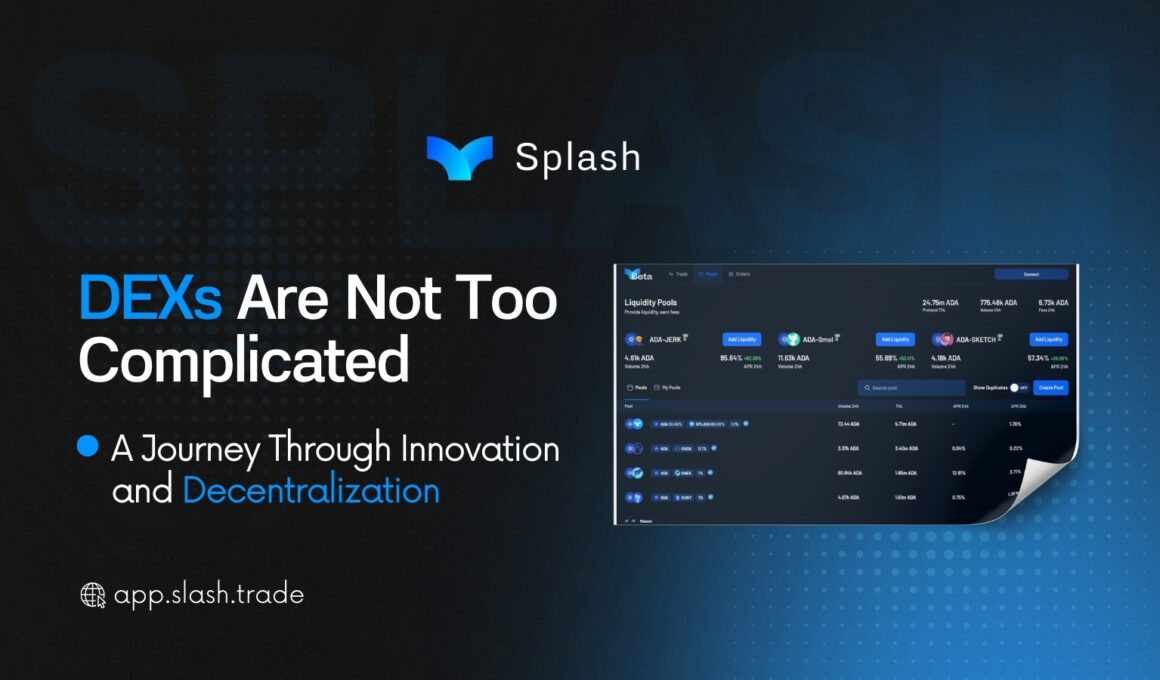History shows us that progress often follows a pattern. We move from simple beginnings to more complex systems, and then back to simplicity through innovation. Decentralized exchanges (DEXs) are part of this cycle. They’re solving problems created by centralized systems, much like innovations in the past.
Long ago, people traded goods directly, bartering items like grain for tools. This system worked, but it was messy. It was hard to agree on value, and trading required direct contact. Then came money. Coins and paper made trading easier. Over time, banks and stock markets added even more structure. These systems centralized trade and created trust. But they also gave power to middlemen.
Now, DEXs are taking us full circle. Like bartering, DEXs let people trade directly. But instead of meeting face to face, we use blockchain technology. This removes the need for banks or brokers, putting control back in the hands of traders.
In 2008, Bitcoin arrived. It introduced blockchain technology and the idea of decentralized money. Bitcoin showed the world that you didn’t need banks to transfer value. DEXs take this idea further. They allow you to trade not just Bitcoin, but thousands of tokens, all without needing a central authority. Bitcoin decentralized money, DEXs are decentralizing trading.
Learning from Centralized Failures

Centralized systems often fail because of their single points of control. In 2008, the global financial crisis happened because banks took risky bets. In crypto, we’ve seen centralized exchanges like Mt. Gox and FTX collapse, losing user funds. DEXs are designed to avoid these risks. Since they don’t hold your money, they can’t mismanage or lose it. Every trade is done on the blockchain, visible to everyone.
Exchanges like Binance and Coinbase are built on trust. They handle your funds, private keys, and transactions. If you forget your password, their support team can help. But with that trust comes risk. When a CEX is hacked or mismanages funds, people often lose their assets. DEXs eliminate the need for trust. You remain in control of your funds at all times. But this comes with responsibility. If you lose access to your wallet, your funds are gone forever.
Despite their reputation for ease of use, CEXs are centralized systems vulnerable to hacks and insider fraud. Billions of dollars have been lost to exchange breaches over the years. DEXs operate without a central authority, reducing the risk of large-scale hacks. Funds are stored in users’ wallets, not on a centralized server. However, DEXs are not immune to risks. Vulnerabilities in smart contracts can lead to exploits, as seen in some DeFi hacks.
Centralized exchanges charge fees for deposits, trades, and withdrawals. These fees are predictable but can add up over time. Transaction fees on DEXs depend on the blockchain they’re built on. On Cardano based DEXs, high gas fees can make small trades unaffordable. Layer 2 solutions and low cost blockchains like Cardano aim to solve this, but adoption is still ongoing.
What is Splash Protocol?

Splash Protocol is a powerful protocol designed for efficient market making and trading on the Cardano blockchain. It combines advanced tools and a unique governance model to reshape how people trade and provide liquidity.
It’s an open source platform that focuses on making trading and liquidity management efficient and seamless. Splash is governed by its users, allowing the community to shape the platform’s future while benefiting from a distributed business model.
The easiest way to understand Splash Protocol is to think of it as a DEX specifically for Cardano native assets. Unlike CEXs that match buy and sell orders, or standard Automated Market Maker (AMM) exchanges, Splash takes a unique approach.
The Intricacies of Splash Protocol as a DEX
Splash combines multiple AMM pool types with the TLB, creating a system that allows market makers to provide liquidity in ways that suit their strategies while offering traders the best possible prices. Instead of choosing between different liquidity pools, Splash taps into all available liquidity in a single order, maximizing efficiency for traders and liquidity providers alike.
If you prefer a hands off approach, you can choose from a variety of pool types tailored to their needs. Those who want more control can place bids and asks on the Temporal Liquidity Book. Advanced order tools and automated strategies make this process efficient. Traders benefit from an extensive range of order types and automation tools, making it easier to achieve their goals, whether it’s simple swaps or complex strategies.
A Simplified Overview of Splash Features

Constant Product AMM Pools: These are basic pools, like Uniswap V2. They hold two assets in a 50/50 ratio and use a simple formula to keep trading balanced.
Weighted Pools: These allow uneven asset ratios, like 20/80. This reduces the amount of base assets needed to create liquidity and helps liquidity providers face less risk of loss.
Stable Pools: Designed for stablecoins or pegged assets, these pools lower trading slippage. This makes them ideal for assets that have stable values.
Dynamic AMM Pools: These pools adjust themselves to focus liquidity around the market price. This reduces slippage for traders and helps liquidity providers earn more with less risk.
Splash uses a unique system called the Temporal Liquidity Book (TLB). It matches orders from both liquidity pools and order books at the same time. This system ensures that traders get the best price with the least slippage. Liquidity providers and market makers benefit from expanded opportunities to earn. Orders can be partially filled, just like on a traditional exchange.
Key Utilities of $SPLASH Token
Splash token is the backbone of the Splash Protocol DAO. Its primary roles are to attract liquidity providers, govern the protocol, and support the decentralized business model.
Earning DAO Fees: veSPLASH holders can claim 50% of all DAO fees every week. These fees are generated from trading activities and other operations within the protocol, providing a consistent reward stream for participants.
Controlling SPLASH Distribution: Newly issued SPLASH tokens are distributed through Smart Farms, where liquidity providers can claim their rewards weekly. This ensures a steady flow of incentives for liquidity providers, encouraging active participation in the protocol.
Voting: Users will vote on two types of proposal. Protocol parameters which changes to fees, mechanics, or other operational aspects and DAO treasury management as for the decisions on how to allocate and use DAO funds.
In a nutshell, Splash combines innovation and simplicity to create a unique trading experience. It bridges the gap between AMMs and order books, providing flexibility and efficiency for all users. Maybe you’re a DeFi trader, a liquidity provider, or a Cardano project, Splash offers the tools you need to flourish. With features like custom pool fees, dynamic AMM pools, and secure execution, Splash Protocol sets a new standard for DEXs on the Cardano ecosystem.










